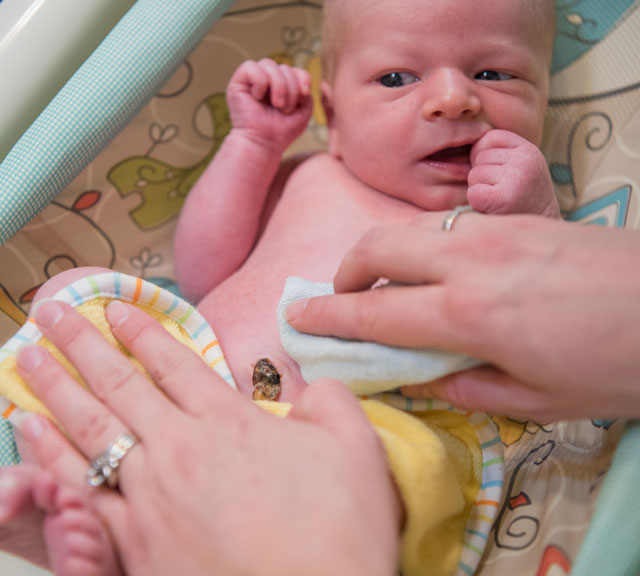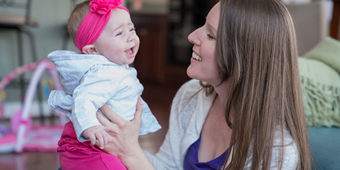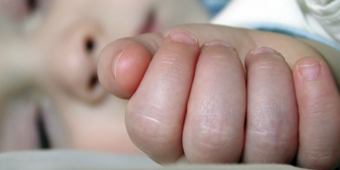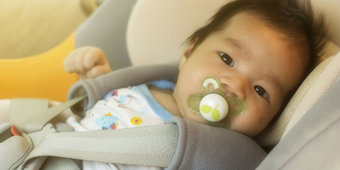Baby Bathing 101: What You Need to Know

Answer a few questions and we'll provide you with a list of primary care providers that best fit your needs.
Bath time can be a wonderful time of bonding between you and your baby. Many babies enjoy being in the water. Baths can be given at any time of day. Nighttime baths can relax a baby, signaling that it’s time to sleep. Whatever time of day is convenient for you and your baby, you can give your child the gentle stimulation of a soothing and safe bath.
Always stay with your baby during bath time.
How Often am I Supposed to Bathe My Baby?
Contrary to popular belief, babies do not need to be bathed every single day. In fact, during the first year of life, three baths every week is ideal. Bathing more frequently than that could dry out your baby’s delicate skin.
How Can I Clean My Baby While the Umbilical Cord is Still Attached?
Fresh home from the hospital, your baby will still have an umbilical cord stump. Until that falls off and the belly button area is healed, you’ll need to give baby a sponge bath to avoid getting the cord wet.
6 Steps for a Successful Sponge Bath
- Gather supplies: a basin of water, two washcloths, mild baby soap and a towel.
- To keep her warm, set the temperature in your house to 75°
- Wrap baby on a towel, and lay her on a spot that is convenient for you, keeping your hand on her the whole time.
- Dip the washcloth into a basin of warm water and gently wash her face.
- Add a small amount of soap to the washcloth and wipe off the baby from the neck down, rinsing with a clean washcloth or small cup of water. To keep baby warm, remove the towel only from the part of the body that you’re washing.
- Gently and thoroughly dry baby. Apply lotion if desired, and then get baby dressed again.
Here’s the Rub: How to Clean a Baby in a Baby Bath Tub

Once baby’s umbilical cord stump has fallen off, and the area seems to be completely healed, she may be ready for you to bathe her in a baby bath tub.
- Gather everything you may need for the baby’s bath, including towels, washcloths, baby soap and shampoo. You may also want a diaper, fresh clothes and a blanket for the floor if you’ll be getting the baby re-dressed in the bathroom.
- Fill a small baby bathtub with two inches of warm (not hot) water.
- Once you’ve undressed your baby, place her into the warm water, using one of your hands to support her head.
- Gently wash her face and ears first with a soft washcloth and mild soap. Rinse, carefully shielding baby’s eyes from the water. Then pat her face and ears dry.
- Be sure to clean between folds of skin.
- Wash the baby’s rear end last to prevent spreading bacteria.
- Dry baby off with a towel after you’re done with the bath to protect from becoming chilled.
How to Wash Baby’s Private Parts
- When washing girls in the genital area, take special care to wash from front to back only. Clean the skin folds by the baby’s thigh, but avoid cleaning inside the labia.
- For circumcised boys whose incision has healed, simply wipe the penis clean (follow your doctor’s cleaning recommendations for just after the circumcision has been performed).
- For uncircumcised boys, do not pull down the foreskin when you clean his penis.
If You Only Remember One Thing, Remember This…
Always stay with your baby during bath time. Gather everything you’ll need before starting to bathe your baby, and remember not to leave her unattended — even to answer the phone or the door. If you must leave the room, you will need to take your child with you.
Answer a few questions and we'll provide you with a list of primary care providers that best fit your needs.
Source: American Academy of Pediatrics




